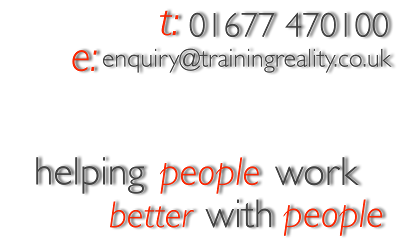Please press (at least!) one of these.
It costs you nothing, and (possibly) helps us spread the word!
Positive mental attitude - PMA
Friday, 5 February 2010
The last article here in this little series looked at the characteristic of simply knowing that you’re right about something. One of the distinctions I made in that category was that there is actually very little choice in the matter – it’s a characteristic of faith or utter, unswerving conviction.
Moving on from that, along the continuum laid out here, the next grouping is for those slightly softer characteristics of being right – either consciously or unconsciously having a little element of doubt or openness about it.
There are two distinctions I want to make in this category, in order to delve more deeply into one aspect in particular – so let’s get the simpler one out of the way first.
Conscious doubt
By conscious doubt, I’m referring to the active decision to “weaken” a position of absolute faith and conviction. The decision to say that, although you really really think or believe you’re right, you will be actively open to the possibility that you’re not; that there are other perspectives, views, opinions out there from which you might be able to learn.
Because this is, in effect, an overlap with the earlier article on this subject, I’ll leave it there – for the time being.
Conscious belief
Conscious belief is really what I wanted to discuss here. This is the “positive mental attitude” school, the power of the mind, the “change your thinking and change your reality” approach. Despite some of my instinctive cringes at these phrases, or, more specifically, the way in which these phrases are often expressed, I genuinely think there is something in it, but it’s a little more subtle.
Twice in the last week, by two very different people, I have been accused of having a positive mental attitude. One person wanted to “borrow” some to get around a particular issue they were having – the idea that having the right attitude to a (in this case) technical IT problem would help get it fixed; and the other wanted to express astonishment that someone who’s been running a business through a recession can maintain a positive attitude.
I will be the first to confess that I am not “unconsciously competent” at having a positive mental attitude – hence this section being about making a conscious choice to be positive. The subtlety comes in through what I see as a realistic, sensible application of this conscious decision.
I don’t think I have ever, seriously, growled at myself in the mirror and called myself positive, life re-affirming things. I don’t think I’ve ever, seriously, stood naked in the garden beating my chest and roaring my machismo. And I’ve never, ever, called myself a tiger.
However, none of that is to say that I don’t understand, or never exercise, the simple benefits of a positive approach. The NLP “technique” that I enjoy the most – in this context and many others – is the active use of the word yet.
Spot the differences:
- I don’t know how to create a webpage. I don’t know how to create a webpage yet.
- Business isn’t turning around. Business isn’t turning around yet.
- I’m not happy with my team. I’m not happy with my team yet.
To me, the second sentence in each paragraph isn’t some cheesy new-age technique. It acknowledges a problem, a difficulty, or an undesirable situation – which is important, because, in the real world, they do exist! What it does do is subtly soften the situation; allow scope of belief that things can change; and open up the opportunity and possibility of doing something about it.
--
The next article in this series will look at what we can do with these possibilities and opportunities. I’m not sure what I’m going to write, yet…
Please press (at least!) one of these.
It costs you nothing, and (possibly) helps us spread the word!



